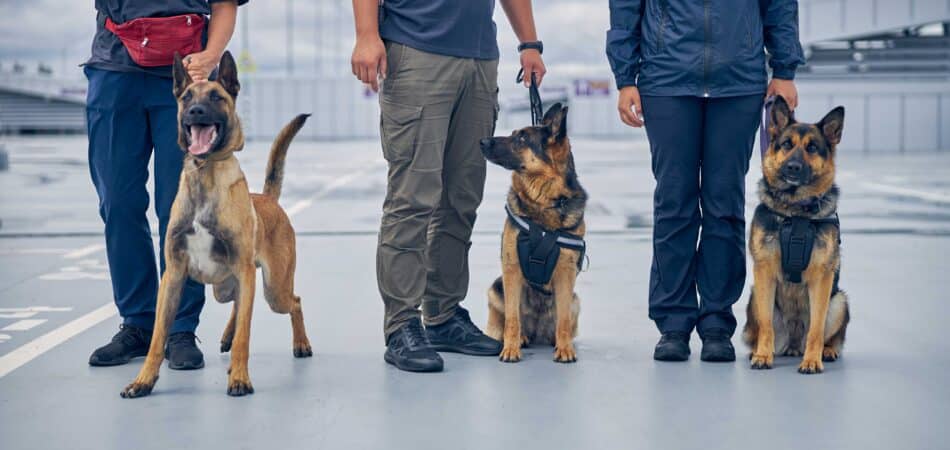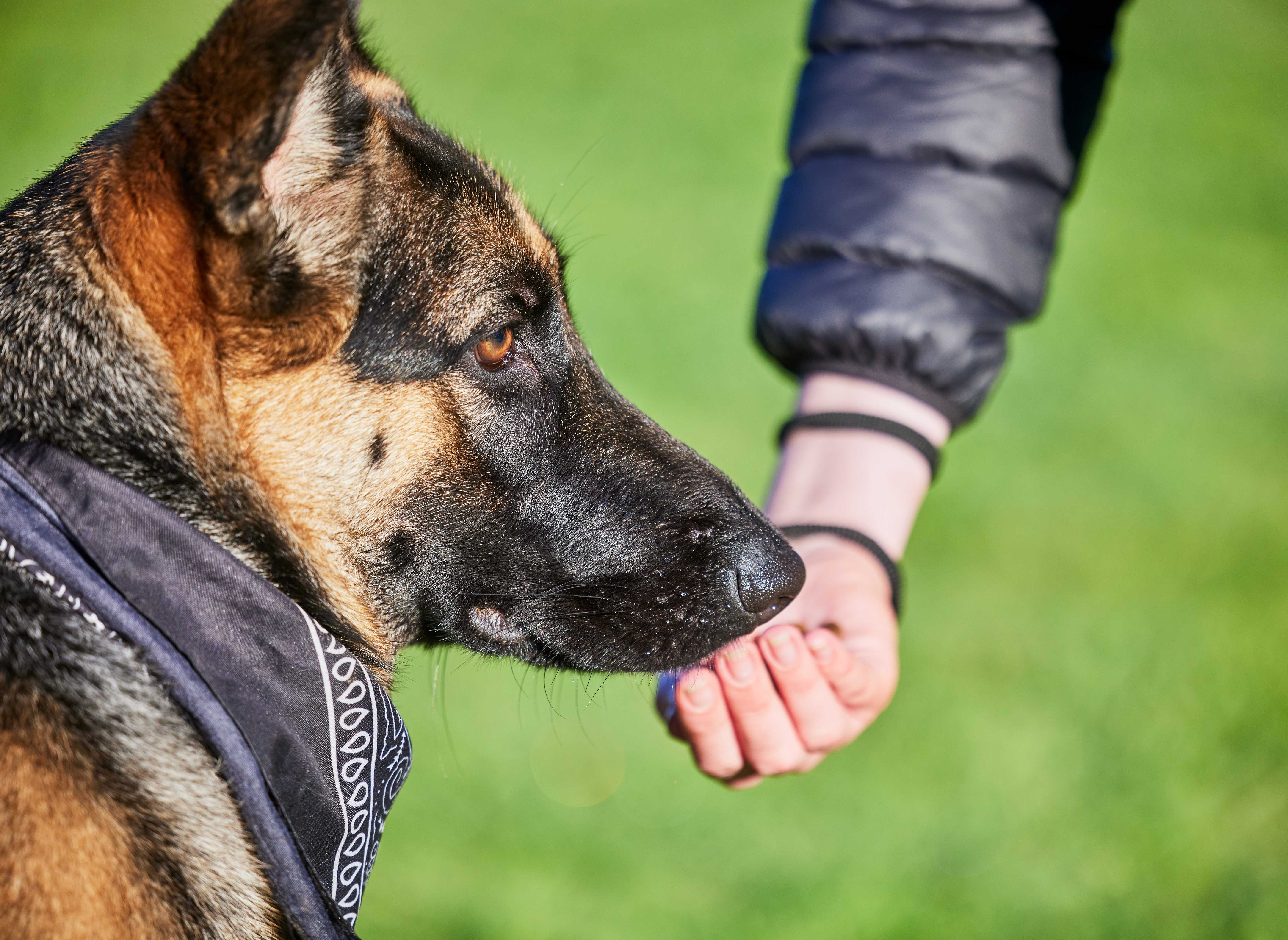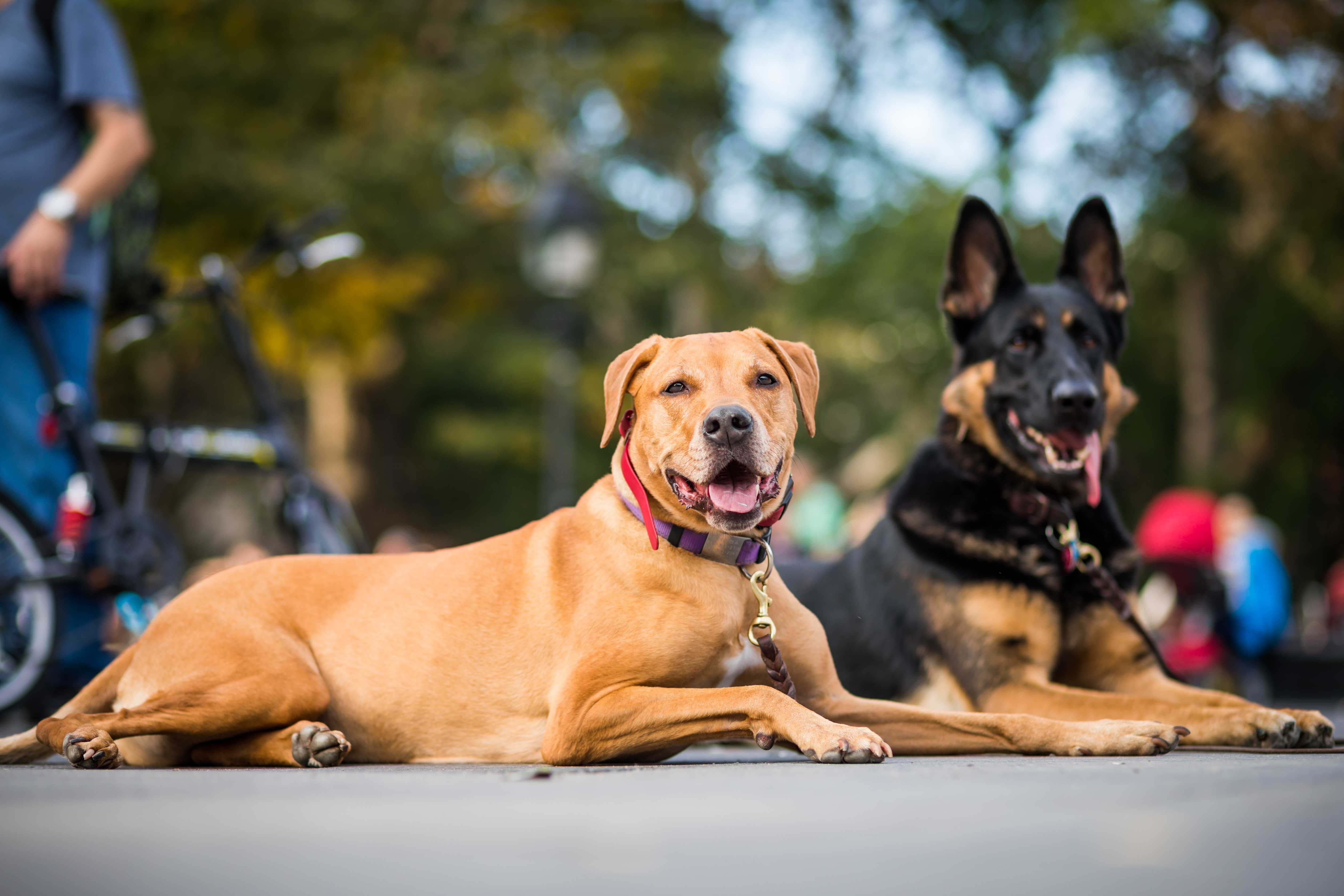






Buying a protection dog is a major decision that combines personal security with responsible pet ownership. A protection dog is specially trained to detect and respond to threats, offering safety, loyalty, and companionship beyond what ordinary pets provide. In this guide, Vanguard Protection Dogs explains how to choose the right breed, understand the levels of training, evaluate costs, and ensure your lifestyle matches the demands of owning a highly trained guardian.
You’re probably reading this because the world feels a little… woof these days. Or maybe the insecurity news has you on edge, or your neighborhood’s vibe has shifted.
Now before you get another security guard to increase the security in your home, how about you consider a protection dog? A protection dog is specifically trained to guard its owner and property. This isn’t your run-of-the-mill pet that barks at the mailman.
These dogs undergo rigorous training to handle a variety of situations, from home invasions to personal attacks. They’re taught to respond to threats with precision and control, making them an effective deterrent and a formidable line of defense.
Perfect, right? Again, before you lasso the nearest German Shepherd and name him “Fang,” there’s a heaping helping of know-how you gotta swallow first.
Simple: for increased security. Look, the mere presence of a powerful, trained dog can send shivers down the spine of even the most determined intruder.
Protection dogs are bred to be alert. They’ll pick up on subtle cues that might escape your notice or cameras, giving you a heads-up if something’s amiss.
Plus, the peace of mind that comes from knowing you have a loyal, capable companion by your side is invaluable.
Unlike security systems that rely on alerts and response times, a protection dog is always on duty and can respond instantly to threats.
These dogs are highly perceptive and can detect unusual activities or potential threats much earlier than humans or electronic systems, giving you valuable time to react.
And beyond their protective capabilities, these dogs provide loyal companionship. They become a member of your family, offering both security and emotional support.
Owning a dog is a responsibility, sure. But a protection dog? That’s a whole different ball game.
Protection dogs are bred for work, for focus, and for a bond that transcends belly rubs.
They need a leader, someone who understands their language (whispers, growls, and the occasional tail wag) and can guide them with confidence.
So, here’s a reality check:

These dogs thrive on routine and consistency. Be prepared to adjust your life to accommodate their training schedules and exercise needs, and ensure they are well-socialized and mentally stimulated.
Owning a protection dog is a considerable financial commitment. From the initial purchase and professional training to ongoing care, veterinary expenses, diet, specialized equipment to insurance. Trust me these costs can add up quickly.
🐾German Shepherd: Known for their intelligence, versatility, and loyalty. They are excellent all-around protection dogs and can adapt to various roles and environments.
🐾Belgian Malinois: Agile, intelligent, and energetic, often used by military and law enforcement.
🐾Doberman Pinscher: Intimidating and loyal, excellent for personal protection.
🐾Rottweiler: Strong and imposing, natural protectors, ideal for family and property protection.
🐾Bullmastiff: Gentle giants, excellent at guarding property and families. Calm demeanor but fiercely protective when needed.
Okay, so you’ve weighed the pros and cons, and you’re still gung-ho about getting a protection dog. Fantastic!
Now comes the fun part: choosing your furry protector.
Here’s what to consider:

Each breed has its strengths and weaknesses. So I’d advise that you do some thorough research before buying protection to make an informed decision:
Don’t just pick the biggest, baddest-looking dog on the block. Look for a dog with the right temperament.
A good protection dog should be confident but not aggressive. They should be able to assess situations calmly and react appropriately.
The dog should also have a strong desire to please and be responsive to commands. This makes training more effective and ensures the dog can perform its duties reliably.
While protection dogs need to be alert and ready to defend, they should also be well-socialized to interact appropriately with family members and visitors.
The price of a protection dog can range dramatically, from a surprising $500 to a staggering $250,000!
Why such a wide price gap?
Well, the purchasing options influence the price tag in most cases.
For instance:
This option splits the cost. Finding a reputable breeder is crucial. Look for a breeder with a history of producing dogs that perform in real-life situations.
Naturally, reputable breeders charge more than someone on Craigslist. However, “you get what you pay for” applies here.
The puppy won’t be trained, and you likely can’t train it yourself to become a fully qualified protection dog. This means hiring a trainer, whose cost again varies based on experience.
For guaranteed quality, consider buying your protection dog from a world-renowned trainer.
These trainers handpick and train dogs specifically for personal protection.
There’s no guesswork, just a highly trained canine companion. However, this top-tier service comes with a top-tier price tag.
Look, a protection dog is a partner, not a weapon. Training should focus on obedience, socialization, and developing a strong bond between you and your canine guardian.
So, while DIY training is tempting, proper protection dog training requires expertise. Seek a reputable trainer experienced in K9 security work.
Training takes time and dedication. Be prepared to invest significant effort and resources in building your dog’s skills and solidifying your bond.
And lastly, reward desired behaviors and use aversives sparingly. A fearful dog is less effective and a detriment to your relationship.
The decision to bring a protection dog into your life is a significant one. While this guide has explored everything you need to know before buying a protection dog, we understand that you may have further questions and require further guidance.
That’s where Vanguard Protection Dog comes in. We specialize in training and matching the right dog with the right family. So feel free to contact us today for a free consultation to discuss your needs and explore your options.